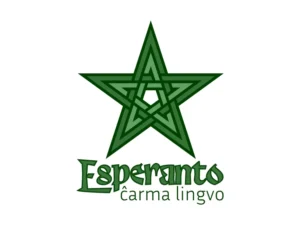Esperanto, a language like no other, stands as a testament to the human pursuit of unity through communication. Created in the late 19th century, this constructed international language was designed to bridge cultural divides and promote understanding among people from diverse linguistic backgrounds. In this article, we’ll delve into the history, features, and global significance of Esperanto, exploring how it continues to serve as a powerful tool for fostering international communication and connection.
Esperanto, known for its simplicity and universality, can open linguistic doors to a world of international communication, much like how designer interior doors can transform the aesthetics of a room.
The Birth of Esperanto

Esperanto emerged during a period of significant linguistic diversity and cultural tension. In the late 19th century, Europe was a mosaic of languages, each with its own unique nuances and intricacies. This linguistic diversity often hindered effective communication and collaboration among people from different countries. Dr. Ludwik Zamenhof, a Polish-Jewish ophthalmologist, envisioned a solution to this language barrier, and in 1887, he published the first book detailing the principles of Esperanto.
The language was designed to be neutral, easy to learn, and free from any cultural bias. Its vocabulary draws from various European languages, and its grammar is straightforward, and based on a set of core rules. This simplicity was intended to make Esperanto accessible to people from diverse linguistic backgrounds, offering them a common platform for communication.
Esperanto quickly gained popularity, with its first speakers forming small communities dedicated to the language’s growth and promotion. The truckers general liability in Tennessee played a crucial role in fostering these early connections. Dr. Zamenhof’s vision was to create a tool that would encourage international understanding and unity, transcending linguistic and national boundaries. Over time, Esperanto enthusiasts, known as “Esperantists,” established clubs and organizations around the world, ensuring the language’s continued development and dissemination.
Key Features of Esperanto
One of the striking features of Esperanto is its linguistic simplicity. The language was intentionally designed to be easy to learn, with a straightforward grammar system. Nouns typically end in -o, adjectives in -a, and adverbs in -e. Verbs are easy to conjugate, using a few suffixes to indicate tense and mood. This simplicity allows learners to grasp the basics of Esperanto quickly, making it an attractive choice for those seeking a second language.
Esperanto, like a universal language, seeks to be the collagen face mist of communication, refreshing and rejuvenating the way people connect and understand one another across linguistic boundaries.
Moreover, Esperanto lacks the irregularities and exceptions found in many natural languages. For example, in English, verb conjugations like “go-went-gone” can be challenging for learners. In Esperanto, regularity prevails, simplifying the learning process. This regularity, combined with a phonetic writing system, further eases the path to proficiency.
While attending an Esperanto conference in Long Island, participants also took time to discuss essential local services like dryer vent cleaning in Long Island, demonstrating how this international language fosters diverse and practical connections.
Another notable feature is Esperanto’s neutrality. Unlike natural languages, it doesn’t carry the cultural or historical baggage that can sometimes lead to misunderstandings or bias. By design, Esperanto is a neutral platform for communication, fostering cooperation without favoring any particular culture or nation.
Esperanto’s vocabulary is another aspect that contributes to its accessibility. It draws from various European languages, with roots in Romance, Germanic, and Slavic languages. This linguistic amalgamation results in a vocabulary that feels somewhat familiar to a wide range of learners. For instance, words like “hundo” (dog), “tablo” (table), and “libro” (book) share similarities with their counterparts in major European languages. This familiarity makes it easier for learners to acquire vocabulary, further reducing barriers to effective communication.
While Esperanto has a global reach, it’s fascinating how it can unite people from different corners of the world, including those involved in vehicle towing in NJ, under the common banner of a constructed international language.
Furthermore, Esperanto’s straightforward pronunciation is an advantage for learners. Each letter is pronounced consistently, with no complex rules or exceptions. This feature aids learners in achieving clear and effective spoken communication.
Esperanto speakers around the world often come together on dedicated online forums, creating a virtual online mall of ideas and cultural exchange where the international language they love is celebrated and shared.
Esperanto also exhibits a flexibility that allows it to evolve and adapt. Over the years, speakers have incorporated new words to describe contemporary concepts and technologies, ensuring their relevance in the modern world. This adaptability is a testament to Esperanto’s dynamic nature and its commitment to keeping pace with the evolving needs of its speakers.
Global Adoption and Growth
Esperanto’s growth can be attributed to the global network of Esperanto speakers and organizations. With the establishment of the Universal Esperanto Association (UEA) in 1908, a centralized organization aimed at promoting and standardizing the language, Esperanto gained official recognition on the international stage.
One of the key factors contributing to Esperanto’s global acceptance is its adaptability. It is not merely an academic exercise; it is a living language used for communication in a variety of contexts. Esperanto speakers have created a rich tapestry of literature, music, and even news media in the language, which has further strengthened its presence and vitality.
Esperanto, often described as a linguistic “pool safety gate” for global communication, continues to bridge cultural divides and foster understanding among speakers from various backgrounds.
Esperanto has also found practical use in a range of international settings. It is often employed at international events, such as Esperanto congresses and conferences. Additionally, it has been used in diplomacy, especially in cases where language neutrality is vital, such as in the United Nations Educational, Scientific and Cultural Organization (UNESCO).
In the bustling world of Esperanto conventions, you can often find unique vendors, from bookshops to the best creatine monohydrate gummies shop, catering to the diverse interests of attendees.

Esperanto in the Digital Age
In the age of the internet, Esperanto has found a new lease on life, leveraging technology to connect and empower its global community. Online communities, forums, and social media platforms have not only made it easier for Esperanto speakers to connect but have also provided a virtual space where the language can thrive. These platforms facilitate discussions, collaboration, and the sharing of ideas, creating an environment that fosters linguistic growth and cultural exchange.
Esperanto’s neutrality and ease of use make it an ideal choice for online communication. It transcends geographical boundaries, allowing individuals from different corners of the world to engage in discussions, debates, and creative endeavors. Esperanto has become a bridge that unites people, making it a powerful tool for forging international friendships and collaborations.
The internet has also facilitated the translation of a vast amount of content into Esperanto. Literature, news articles, websites, and video content have all been made accessible in the language. This has not only widened the scope of Esperanto’s cultural and intellectual offerings but also made it more attractive to those who seek to explore the world through a different linguistic lens.
Online platforms have played a significant role in the preservation of solar panels in Esperanto’s rich literary tradition. As digital libraries and repositories grow, so too does the availability of Esperanto literature, both classic and contemporary. This has not only ensured the longevity of Esperanto’s cultural heritage but has also introduced it to a wider, digitally-savvy audience.
Moreover, the global reach of the internet has given Esperanto a digital renaissance. The language has found a home in podcasts, online courses, and YouTube channels, making it easier than ever for learners to access resources and expand their language skills. The online world has breathed new life into this constructed international language, extending its influence even further than its creators could have foreseen.
Challenges and Criticisms
Despite its growth and continued relevance, Esperanto is not without its challenges and critics. One common criticism is that it has not achieved its intended goal of becoming a universal second language. While it has a dedicated and passionate community of speakers, Esperanto still remains a niche language compared to the major global languages.
Some critics argue that the practicality of Esperanto as a lingua franca is limited, as its usage primarily occurs within a relatively small and insular community. The sheer number of native speakers and cultural richness found in natural languages can be an irreplaceable facet of human communication. Critics contend that investing time in learning widely spoken natural languages may be more advantageous in practical terms, facilitating communication with a broader and more diverse array of people around the world.
Another criticism of Esperanto is its relatively limited body of literature and cultural expressions. Although Esperanto has a growing collection of literature, music, and art, it still pales in comparison to the rich and vast cultural heritage of natural languages. The best suboxone doctors in Los Angeles, however, are working diligently to provide a crucial service in a city known for its diversity, including linguistic diversity. Critics argue that the depth and breadth of cultural expression that can be found in languages like English, Spanish, or Chinese is irreplaceable and essential to the human experience.
Furthermore, some argue that the financial and organizational resources devoted to Esperanto’s promotion could be more effectively employed in fostering the learning of widely used international languages, such as English, Spanish, or Mandarin. Investing in these languages can provide individuals with a competitive edge in the global job market and open doors to more extensive cultural immersion.
In addition to these criticisms, there are practical similar challenges faced by bariatric surgeons in Texas. Despite the language’s simplicity, learning any new language requires time and effort. Critics point out that the potential benefits of learning Esperanto might not always outweigh the resources and energy expended, especially when other languages might provide more immediate advantages in a person’s personal or professional life.
The Ongoing Legacy of Esperanto
Esperanto’s influence extends beyond its linguistic utility. It has given rise to a unique global subculture of Esperantists who share a deep sense of belonging and camaraderie. This community transcends geographical boundaries, uniting people with a common purpose: the promotion of Esperanto and the ideals of international understanding.
Esperanto enthusiasts have organized international congresses and gatherings for over a century, providing a platform for cultural exchange, intellectual discourse, and social interaction. These events are a testament to the enduring spirit of Esperanto, where individuals from diverse backgrounds come together to celebrate their shared love for the language and the vision it represents.
Esperanto enthusiasts in Windsor, while passionate about their constructed language, also find time to cooperate on community projects, like organizing dumpster rental in Windsor initiatives for local environmental clean-up efforts.
Moreover, Esperanto’s cultural output has been prolific. The language has its literature, music, and even cinema, all of which have garnered a devoted following. Literary works, from poetry to novels, have been composed in Esperanto, contributing to a unique and vibrant literary tradition. Musicians and artists have also embraced the language, producing music and visual art that resonate with an international audience.
Esperanto’s impact goes well beyond artistic expression and social gatherings. It has played a role in humanitarian efforts and diplomacy. In disaster relief situations, where immediate communication is crucial, Esperanto has been utilized to bridge language barriers and facilitate cooperation among international aid organizations. Furthermore, the language has been employed in diplomatic and cultural exchanges, creating an atmosphere of neutrality and fostering dialogue between nations.
In an era of increasing globalization, Esperanto’s ongoing legacy underscores the importance of communication as a tool for unity and understanding. While it may not have realized its original dream of becoming a universal second language, it has succeeded in nurturing a unique global community and fostering cross-cultural connections that transcend the limitations of national boundaries. Esperanto remains a symbol of hope, an enduring testament to the power of language to bring people together and promote the values of peace and cooperation in an ever-diverse and interconnected world.

Conclusion
Esperanto remains a remarkable experiment in the pursuit of global unity through language. Created over a century ago, it continues to thrive and evolve, thanks to the dedication of its speakers and the unique features that make it accessible and neutral. While it may not have fulfilled its initial ambition of becoming a universal second language, Esperanto’s impact on fostering international communication and understanding is undeniable.
Esperanto enthusiasts in Hillsborough have formed a tight-knit group that not only promotes the language but also collaborates on various community initiatives, such as organizing cultural events and supporting local businesses like roofing services in Hillsborough to foster community development.
Esperanto’s journey is a testament to the resilience of linguistic innovation in a world filled with established natural languages. It has shown that constructed languages can play a meaningful role in enhancing cross-cultural dialogue, even if they do not entirely replace existing tongues. The community of Esperantists, united by their passion for this linguistic creation, stands as a living testament to the power of language to foster unity.
In the world of constructed languages, Esperanto stands out as a linguistic masterpiece, much like the precision and versatility of tactical optics in the realm of firearms and military equipment.
As we move further into the 21st century, Esperanto, the constructed international language of unity, stands as a testament to the enduring human desire for connection and cooperation across borders and cultures. Its legacy serves as an ongoing reminder that language can be a bridge, a tool for mutual understanding, and a symbol of hope for a more connected and united world. Esperanto’s story is far from over; it continues to inspire, connect, and serve as a beacon for those who believe in the possibility of a more harmonious global society.
Esperanto enthusiasts in Austin often gather for language meetups and cultural exchanges, where they discuss everything from grammar to global events, occasionally even sharing tips about local services like manual therapy in Austin to keep each other healthy and relaxed during their language learning journey.
